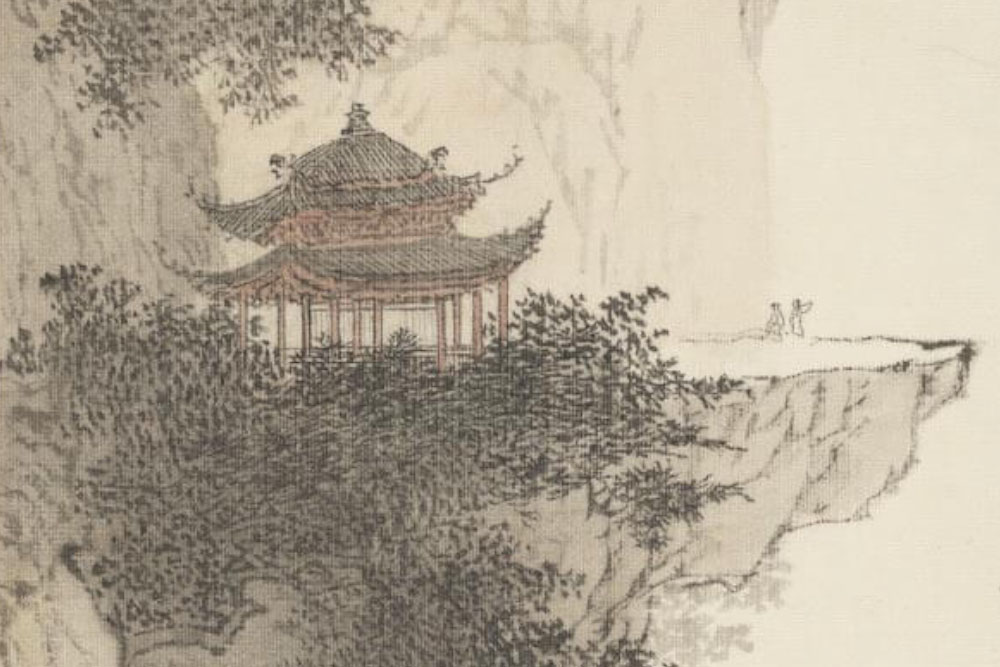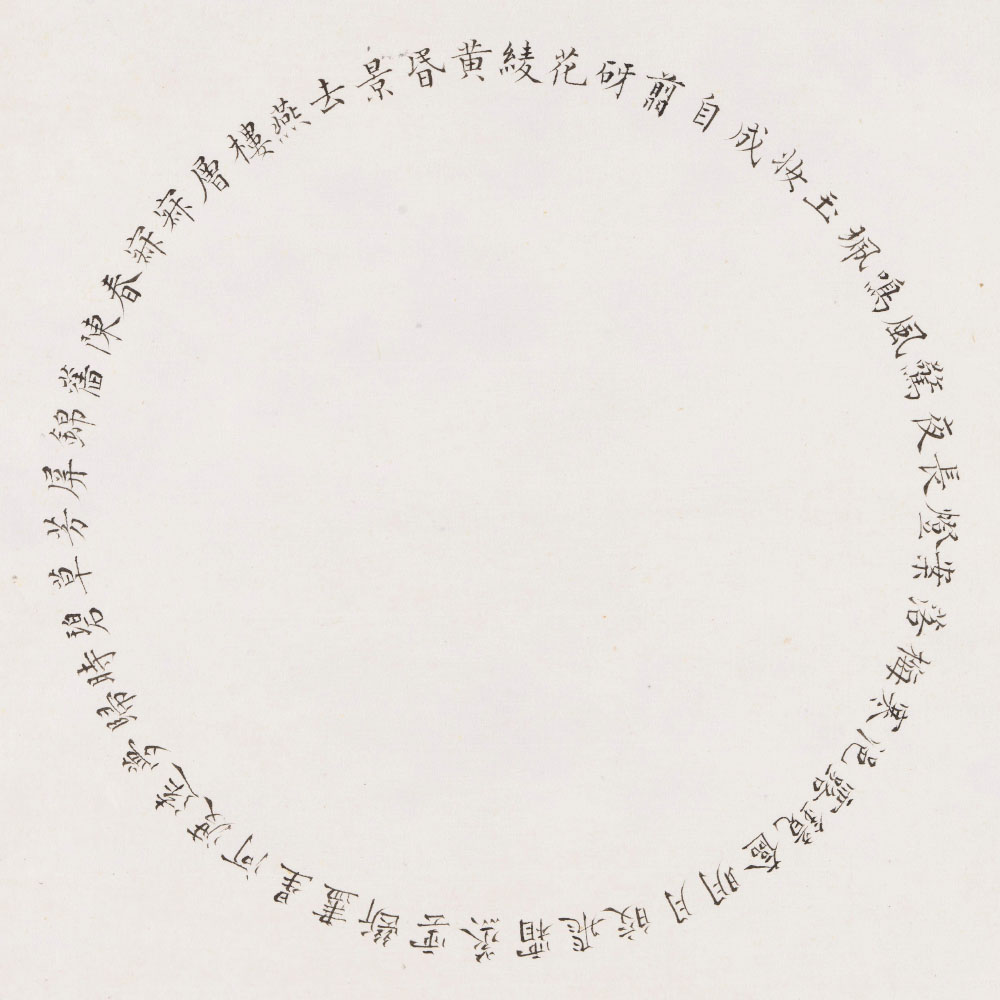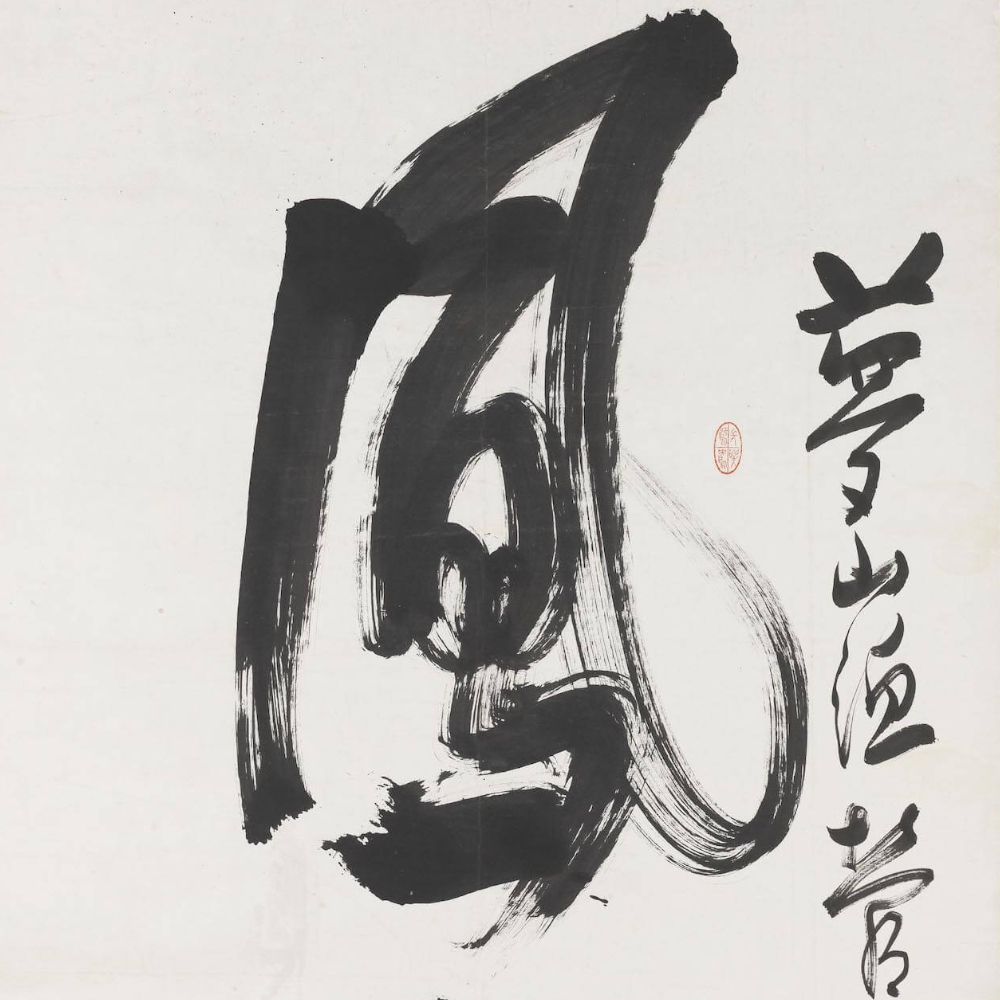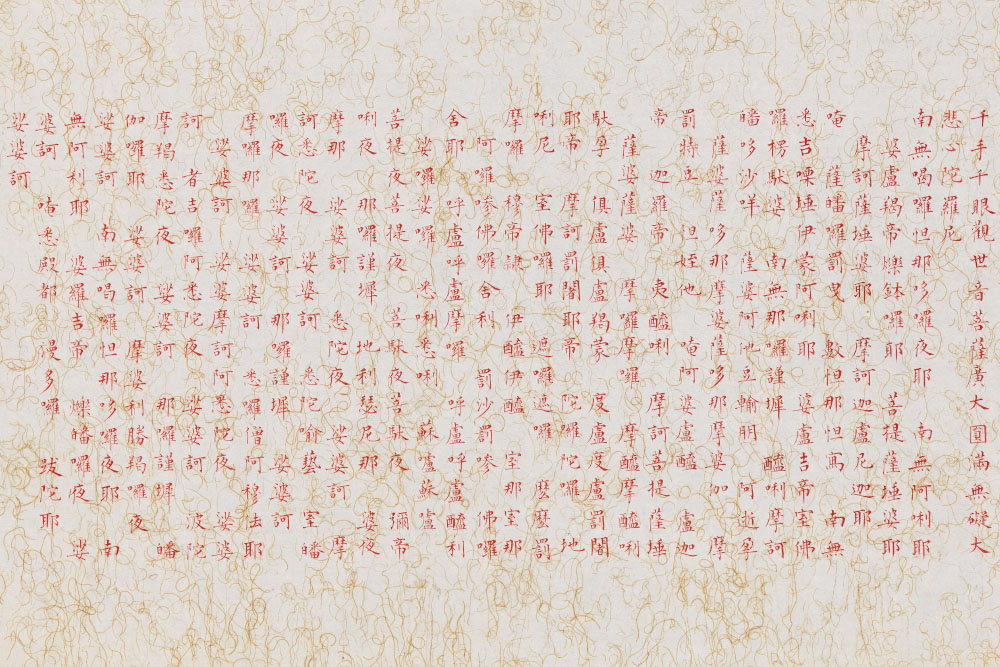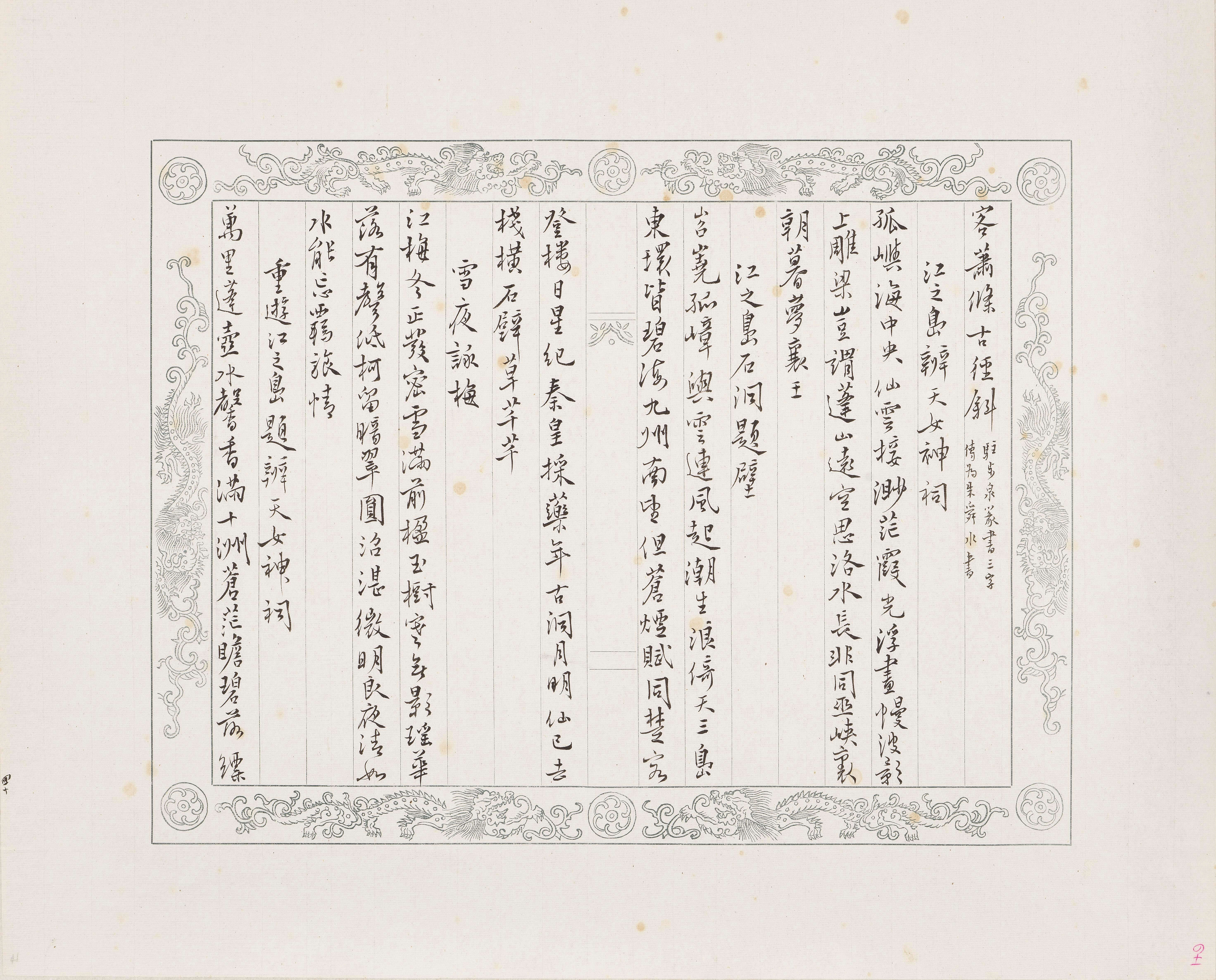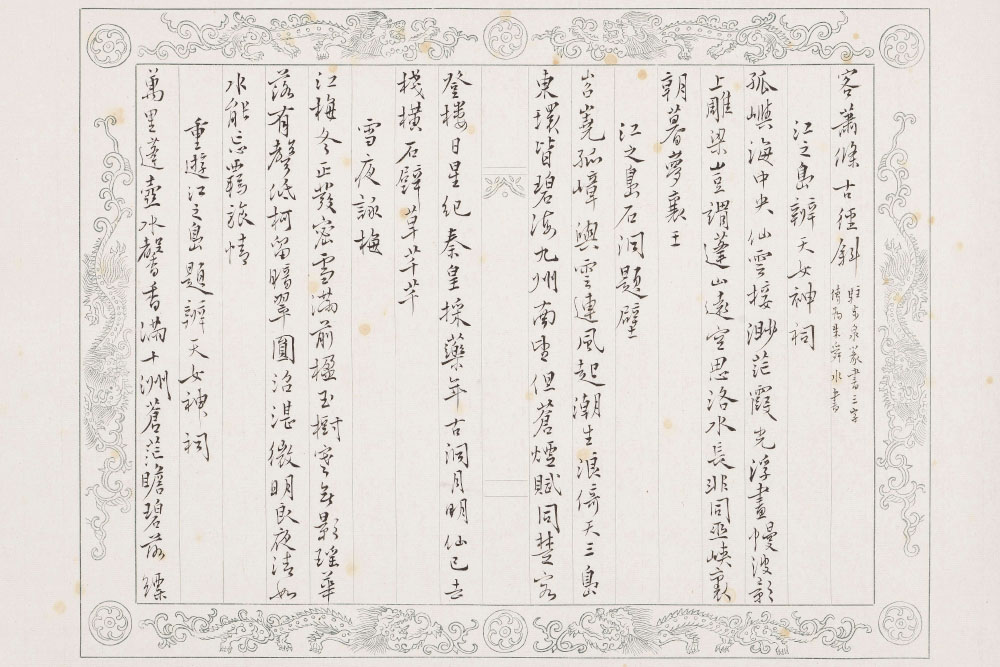Linking Past and Present
The naturally talented Pu Hsinyu received a strictly traditional education during his childhood. Along with the family's large art collection, it gave the tone of his brush and ink a strongly classical and beautiful touch. Different subjects such as gibbons at play, children entertainments, or landscapes with trees may appear disparate but all have a pure and otherworldly freshness, Pu's consummate brushwork conveying the cultural essence of the Chinese painting tradition. In calligraphy, he mainly followed the trend of Modelbook Studies, but his strokes of the brush have a handsome force that does not betray the slightest weakness. In fact, he was able to give Modelbook Studies period meaning and to breathe new life into this school of calligraphy. Generally speaking, the dashing and lofty air that exudes naturally from his brush and ink most certainly is something that other masters admired and looked up to, making him one of the most representative figures in the modern expression of traditional Chinese painting and calligraphy.
- Ancient Pines at the Thatched Hut in the
Western Hills with Inscriptions- Pu Hsin-yu (1896-1963), Republican period
- Handscroll, ink on paper, 32 x 235.2 cm
- Entrusted from the Cold Jade Hall
Compared to "Conifers," the spacing of the contorted evergreens in this handscroll is more orderly, as if the artist especially chose five groupings of ancient trees to arrange them here. The focus seems to be more on expressing the twisting nature of the old tree trunks as similar to writhing dragons. Written in the blank spaces are several allusions related to evergreens along with the artist's memories of the old trees at Jietai Monastery in the Western Hills of Beijing. Compared to the inscriptions on other similar surviving paintings by Pu Hsin-yu, the ones he did in 1962 were particularly favored, and he later rendered at least 200 versions on this subject. This handscroll is dated to 1962 and reflects the popularity of this type of painting.
- Precipitous Cliffs in a Rainy Atmosphere
- Pu Hsin-yu (1896-1963), Republican period
- Album leaf, ink and colors on paper, 24.2 x 14.4 cm Entrusted from the Cold Jade Hall
This work was selected from the album "Fine Joys of Mountains and Streams," which contains sixteen leaves. The compositions and brushwork methods all derive from the ideas found in Song dynasty paintings. The main mountains in this leaf are placed to the left, leaving a steep cliff and an outcropping that extends outwards, on which two scholars gaze into the distance at the mountain scenery.
The rocks in the foreground area were outlined in ink and then texturing added with a slanted brush, to which ink and ocher washes were applied. The background scenery was done directly with ink washes to further distinguish it from the foreground. The skillful balance of solid and void creates a scene that conveys the essence of a misty atmosphere. This work continues in the academic painting style of such Southern Song masters as Li Tang as well as Ma Yuan and Xia Gui.
- Palindrome on Spring
- Pu Hsin-yu (1896-1963), Republican period
- Hanging scroll, ink on paper, 39 x 27 cm
- Entrusted from the Cold Jade Hall
This is a type of palindrome poetry in which the text appears in a circle and can be interpreted in either direction. As a result, the seven-character verse can read clockwise from "Linghua 綾花" or counterclockwise starting with "Huanghun 黃昏." In fact, a wide range of possibilities exist in the text, giving rise to numerous readings, which at the same time reveal the author's compositional skill and literary prowess.
Pu Hsin-yu's small regular script here maybe appears similar to "academic" script, but close observation shows a more refined strength to the powerful brushwork. The syncopated cadence of the brush is clearly seen, and the character structures overall are upright and elegant, having a quite spirited and refreshing quality.
- "Phoenixes Gather" in Flying White Calligraphy
- Pu Hsin-yu (1896-1963), Republican period
- Hanging scroll, ink on paper, 132.4 x 64.2 cm Entrusted from the Cold Jade Hall
"Flying white" is a type of calligraphy to which Pu Hsin-yu paid particular attention. He once said, "To practice flying white, one must make it soar and dance," and he left behind quite a few works in this style. This particular piece clearly reveals the speed and flight of the brush movement, the areas of "flying white" showing where the brush tip dashed across the paper and doubled back. The heavier places are not as light and nimble, creating a perfect balance between the two aspects and not being overly focused on either.
"Firebirds soar and phoenixes gather" is a term that originally referred to the flying and dancing movements of these legendary birds and comes from Lu Ji's (261-303) "Ode on Floating Clouds." Later, it became synonymous with the wondrous movements of a calligrapher's brush, and the practice of "flying white" calligraphy most aptly reflects this expression.
- The Mantra of Great Compassion in Vermilion
- Pu Hsin-yu (1896-1963), Republican period
- Mounted, vermilion ink on paper, 36.6 x 66 cm Entrusted from the Cold Jade Hall
Pu Hsin-yu lost his father while still young and was subsequently raised by his mother, Lady Xiang. After she died in 1937, Pu sold Lu Ji's (261-303) "Pingfu Modelbook" to cover her funeral expenses. During the period of mourning, he added his own blood to transcriptions of Buddhist scriptures and paintings of Buddhist subjects. Later on the anniversary of her death, he would maintain such practices as a way to pray for the fortune of his mother.
For calligraphy in small characters, Pu Hsin-yu wrote, "In doing small characters, one must first practice large characters to become proficient in all eight types of brush movements." This is fully evident here, where not only is every stroke exacting, the forms even further so attain the realm of being "more than generously proportioned."
- Discourse on Painting from the Cold Jade Hall
- Pu Hsin-yu (1896-1963), Republican period
- Mounted, ink on paper, 37.4 x 43.4 cm
- Entrusted from the Cold Jade Hall
Pu Hsin-yu clearly pointed that "in using the brush, one must use a centered tip," directly realizing that the basic principle of brushwork is to employ a centered brush. This is a method that allows the tip of the brush to remain within the center of the line, which in turn makes it more easily full and clear. Visually speaking, it becomes more rounded and smooth, adding considerably to the level of appreciation.
As for Pu Hsin-yu writing that "painting emerges from calligraphy, the two not from different roots," it indicates his insight into literati painting and the important view that calligraphic methods should be a part of painting practice. In terms of object imagery, Pu Hsin-yu also explained in detail the techniques of depiction and the principles behind them, thus making this text of considerable value.



